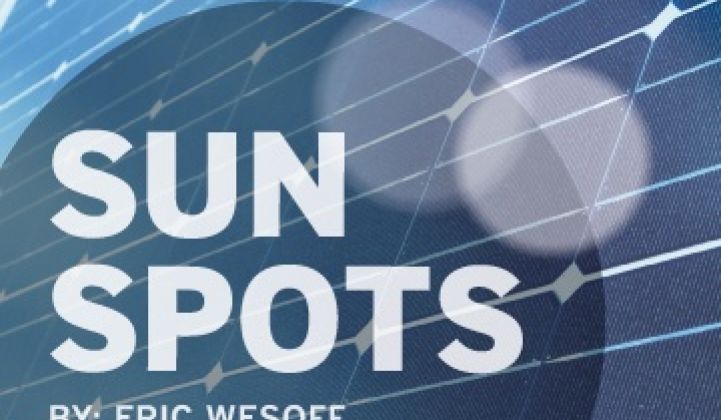One hundred gigawatts of solar PV is installed on the global grid.
That first 100 gigawatts has brought the solar industry to this curious point.
- The solar industry is living through the denouement of a market jacked up on incentives and the associated manufacturing overcapacity and painful consolidation.
- Entrepreneurs are witnessing the collapse of a venture capital bubble in solar and its legacy of dead-men-walking thin-film and CPV firms, funded and abandoned by VC investors and their limited partners.
- This is the twilight of the Investment Tax Credit (ITC) and California Solar Initiative (CSI) in the U.S. -- which faces a future absent any federal incentive for photovoltaics.
- The new global trade reality entails tariffs on Chinese solar panels in the U.S. and looming trade wars between China, the U.S., India and the EU.
- Major shifts are happening in China's solar manufacturing industry and its domestic solar market.
- There is also a shift in solar markets from the EU to the The Americas, Japan, and the Global South.
Despite all of these dynamics and headwinds, the solar industry continues to grow, while the cost of panels, electronics, etc. continues to fall.
So what does solar in the post-ITC, post-CSI, post-tariff, $0.50-per-watt-module future look like? It won't look like today's industry.
On the manufacturing side, only lean, differentiated vendors will remain. "Differentiated" might mean more efficient panels, vertical integration, unimpeachable quality, or the backing of a large, stable conglomerate. It will mean the end of tier-three and tier-two manufacturers. It will mean that manufacturers will have to learn to live with slim margins -- more akin to flat-panel displays than iPhones. There will be a greater focus on reliability and lifetime in PV panels. The list of the top five solar firms will include some new names.
Permitting, labor time, interconnection, and other soft costs will get scrubbed down. System costs will also continue to be driven down.
We are already talking to the next wave of solar entrepreneurs and the next generation of solar manufacturers -- and these folks expect to increase performance and lower price. Mature markets go through business cycles, and solar is in its first big one as an adolescent. And innovation won't be happening just in the periodic table, but at the tables of financiers, where new financing tools and funding sources are brought to bear.
Brad Mattson, the CEO of solar startup Solexant and a semiconductor industry luminary, calls the current stage "Solar 2.0." (He speaks on the topic Wednesday evening in Palo Alto, CA -- please say hello if you attend. It's free.) Mattson has lived through enough business cycles in the semiconductor industry to recognize what's occurring in solar today.
Mattson writes, "It is this cycle, with its consistent and relentless price decline pressure, that is now driving the real birth of the solar industry."



